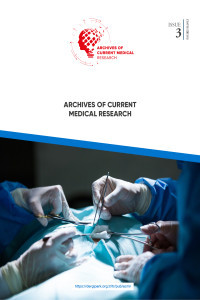What is the ideal repair technique for triple hernia accompanied by umbilical and bilateral inguinal hernias?
What is the ideal repair technique for triple hernia accompanied by umbilical and bilateral inguinal hernias?
Triple Hernia, Umbilical Hernia Bilateral Inguinal Hernia, Transabdominal Preperitoneal Repair.,
___
- 1. Korkmaz NB, Öğünç G, Mesci A. The isokinetic and isometric analysis of laparoscopic and conventional inguinal hernia repair effects on physical activity. Turk J Surg. 2011; 27(1):20-24.
- 2. Perez AJ, Strassle PD, Sadava EE, Gaber C, Schlottmann F. Nationwide analysis of inpatient laparoscopic versus open inguinal hernia repair. J Laparoendosc Adv Surg Tech. 2020; 30(3):292–98.
- 3. Poelman MM, van den Heuvel B, Deelder JD, Abis GSA, Beudeker N, Bittner RR, et al. EAES Consensus Development Conference on endoscopic repair of groin hernias. Surg Endosc. 2013;27(10):3505–19.
- 4. Scheuermann U, Niebisch S, Lyros O, Jansen-Winkeln B, Gockel I. Transabdominal Preperitoneal (TAPP) versus Lichtenstein operation for primary inguinal hernia repair - A systematic review and metaanalysis of randomized controlled trials. BMC Surg. 2017;10;17(1):55.
- 5. Köckerling F, Simons MP. Current Concepts of Inguinal Hernia Repair. Visc Med. 2018;34(2):145-50.
- 6. Bertozzi M, Magrini E, Appignani A. Preliminary experience with laparoscopic repair of associated inguinal and umbilical hernias in children. Hernia. 2015;19(4):617-21.
- 7. Boiko VV, Parkhomenko KY, Gaft KL, Feskov OE. Simultaneous operations during umbilical and paraumbilikal herniarepair: possible or necessary? Wiad Lek. 2021;74(2):220-24.
- 8. Hamza Y, Gabr E, Hammadi H, Khalil R. Four-arm randomized trial comparing laparoscopic and open hernia repairs. Int J Surg. 2010;8(1):25–28.
- 9. Simons MP, Smietanski M, Bonjer HJ, Bittner R, Miserez M, Aufenacker TJ, et al. (The Hernia Surge Group). International guidelines for groin hernia management. Hernia. 2018;22:1–65.
- 10. Kamer E, Unalp HR, Derici H, Tansug T, Onal MA. Laparoscopic cholecystectomy accompanied by simultaneous umbilical hernia repair: a retrospective study. J Postgrad Med. 2007;53(3):176-80.
- 11. Harriott CB, Dreifuss NH, Schlottmann F, Sadava EE. Incidence and risk factors for umbilical trocar site hernia after laparoscopic TAPP repair. A single high‑volume center experience. Surg Endosc. 2021;35(9):5167-72.
- Yayın Aralığı: Yılda 3 Sayı
- Başlangıç: 2020
- Yayıncı: 14 Mart Tıbbiyeliler Derneği
Oruç YUNUSOĞLU, Çagla KÖSE, Andleeb SHAHZADİ, Bülent DEMİR, Burak ÖNAL, Sibel ÖZYAZGAN, Ahmet Gökhan AKKAN
From a dermatologist point of view, enthesopathy and peripheral neuropathy in psoriasis patients
Sevgi KULAKLI, Nilgün ATAKAN, Gökhan ÇAĞLAYAN, Ayşen AKINCI, Levent ÖZÇAKAR
Elderly burns; Our clinical experiences
Ali Emre AKGÜN, Merve AKIN, İsa SÖZEN, Nihan TURHAN, Nermin Damla OKAY, Ahmet Çınar YASTI
Clinical and microbiological characteristics of Candida meningitis/ventriculitis in children
Ümmühan ÇAY, Nisa Nur TAPAÇ, Adnan BARUTÇU, Derya ALABAZ, Özlem ÖZGÜR GÜNDEŞLİOĞLU, Filiz KİBAR, Kadir OKTAY
Heavy hemolysis after organophosphate poisoning by chlorpyrifos ethyl
Metin BAĞCI, Serhat SAYİN, Mehmet DAGLİ
Percutaneous radiofrequency nerve ablation in patients with chronic heel pain
Aydın YAVUZ, Hüseyin GÖBÜT, Çağrı BÜYÜKKASAP, Kürşat DİKMEN, Hasan BOSTANCI, Ahmet YALÇINKAYA, Mehmet CİNGİRT, Özlem GÜLBAHAR, Tuğba TAŞKIN TÜRKMENOĞLU, Aydın DALGIÇ
